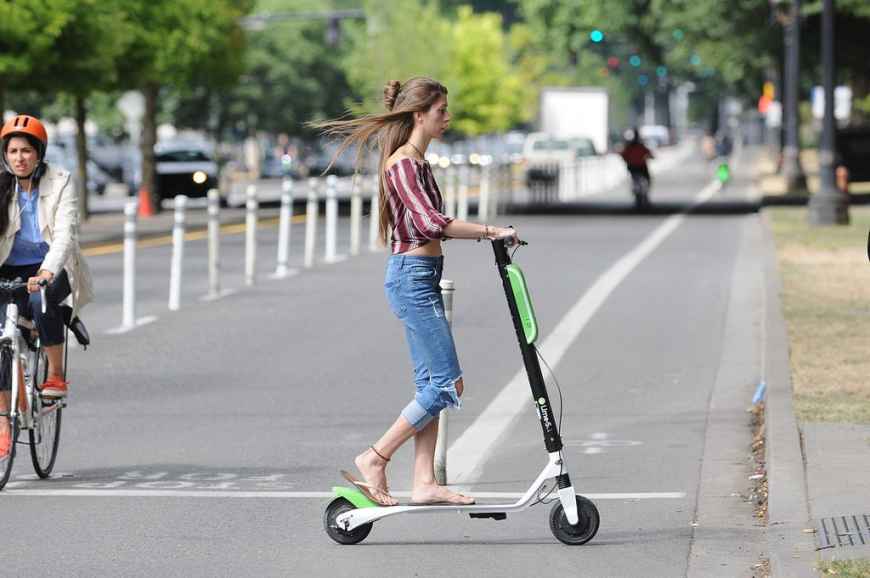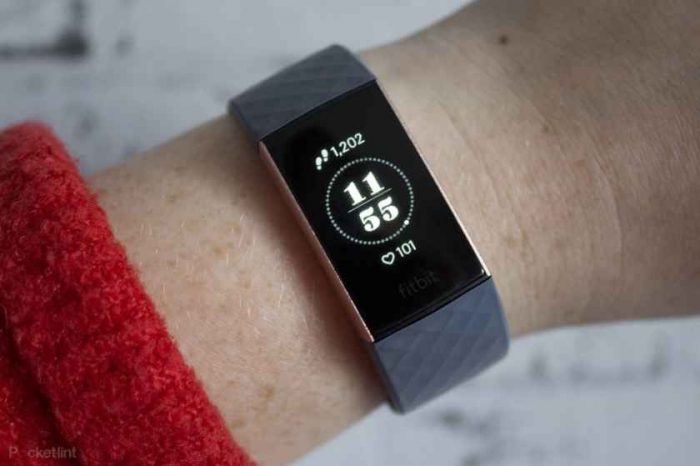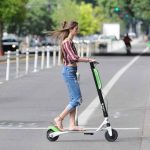How electric scooters are going to transform the $7 trillion global mobility market

There is a new mode of transportation out there and it’s rapidly changing how people navigate the urban space. It’s probably not what most people think it is though. It’s not electric cars, electric trucks or self-driving vehicles. Nor is it public transportation; like buses, trains, taxis or even Uber and Lyft.
It’s the electric scooter. And they are popping up everywhere as companies from Bird to Lime and OjO race to dominate the market. They’re on every corner in major cities, and even in gated communities across the world.
What most investors haven’t considered, however, is how big this emerging industry actually is. An industry that could grow to become a $42 billion global market by 2030.
From Startup To Billion Dollar Unicorn In Record Time
The simple fact is that some of these small companies are achieving unicorn status and multi-billion-dollar valuations in record time.
Take for example Bird, launched in September 2017 with an initial seed investment of just $18 million, they became the fastest ever company to reach unicorn status, hitting the $1 billion valuation marker in under a year. Having raised $548 million in capital, Bird is now valued at over $2.75 billion.
Lime was launched in July 2017 with a seed investment of $42 million. Exactly one year later, in July 2018, they too hit the billion-dollar valuation mark. With $867 million raised in capital, Lime is currently valued at $2.4 billion.
On the other side of the world, Niu is taking the micro-mobility market by storm. It’s already become one of the country’s most exciting new tech firms. Founded in 2014, Niu has quickly climbed the ranks to become the world’s top provider of urban mobility solutions, essentially creating the market for these types of vehicles. Since listing on Nasdaq just last year, it has performed significantly better than some of the other super-hyped IPOs in the sector, and it’s showing no signs of slowing.
Even General Motors has created its own brand of electric bikes, called Ariv. The bikes were just launched this year but have already captured the attention of the European market. While they err on the side of pricey, coming in at $3,800 per unit, they do boast a high top speed and can travel a modest distance on a single charge. The kicker for many, however, is that they can fold into an easily carriable pack, making them the perfect choice for a lot of commuters. Especially in big cities like London or Berlin.
And now OjO is hoping to follow this trend.
There is absolutely no doubt that the electric scooter market is booming. It’s fueled by desperate cities fighting traffic congestion and air pollution; by a population that is increasingly worried about the environment and looking for convenient and affordable low emission alternatives.
It’s no wonder that the venture capital division of Google’s parent company, Alphabet Inc. led the charge in the recent $335 million investment round for Lime. Or that Abu Dhabi’s sovereign wealth backed Mubadala Capital helped raise $60 million for Tier Mobility, the biggest European player in the electric scooter market. And these early investors are experiencing incredible returns.
Change Is Definitely Needed
Even though the electric scooter promises to be a great solution to environmental and traffic concerns, their introduction into the urban environment has not been painless. It’s becoming increasingly clear that the “blitzscaling” model deployed by the likes of Bird and Lime is broken.
Rapidly throwing thousands of scooters into cities is actually causing a lot of problems, public safety being the biggest concern. Scooters sharing space with both pedestrians and cars have so far been a recipe for disaster.
It’s clear that there is a huge demand but that a new approach is needed and this is where OjO is hoping to shine. With their focus on public safety and early track record, they may be poised to take over markets where other companies have been banned.
Turning Public Opinion
However, safety does not end with the driver. The OjO scooter has some key features that help make it a popular choice with both drivers and local authorities. It has an inbuilt GPS system that allows a city to deploy so-called geo-fencing.
For example, if a city does not wish for electric scooters to enter a public park, the OjO can use its Bluetooth speakers to issue a warning to the driver and if he proceeds anyway, the scooter can simply be automatically powered down.
These features are unique to the OjO and help the company be flexible when negotiating with cities and may enable them to enter markets where other providers have been banned.
Changing Habits Requires Comfort & Convenience
Standup scooters are not only unsafe, they also have a market. Ask yourself this, would you really use a scooter for your daily commute if you had to stand up all the time? How would you even bring back your groceries if you took your scooter to the stores?
For the electrical scooter to become more than a fad it needs to offer both convenience and comfort, two things the OjO has embraced. The seat and design ensure maximum comfort even for long rides and with its 50-mile range on a single charge, the OjO outperforms all competition on range alone.
An unstoppable $7 Trillion Dollar Trend
The global mobility market is worth a total of $7 trillion and growing.
Consider these facts:
- 59% of all private vehicle trips are under 6 miles
- A boom in metro area populations has negatively impacted traffic congestion, air pollution, energy usage, mobility, and more
- Tech-based mobility solutions and city infrastructure improvements (e.g., public transit and added bike lanes) are emerging to improve commuting times and reduce congestion and greenhouse gas emissions
- Parking costs are escalating, and precious city space is wasted on car storage
- North Americans are driving less, especially in cities with ride- hailing services and an expanding array of mobility options
And it becomes clear that “Micro-mobility” solutions – personal individual electric vehicles, such as e-bikes and e-scooters, rentable by-the-minute through a smartphone app – can and should effectively replace most personal car and ride-hailing trips, as well as deliver first- and last-mile solutions for public transit. That’s why Goldman Sachs predicts that ride-hailing revenue will increase to between $177 billion and $492 billion by 2030.
Uber has defined this new market in a million ways. It hasn’t been easy. Now, it’s got its hands in not only the gig-based economy with the flagship ride-hailing app and Uber Eats, but also in the micro-mobility trend with its Jump acquisition which includes shared dockless bikes and scooters.
And then there’s Lyft. Though the widely loved US-based may seem a bit overvalued, it’s still sustainable. It went public in March for $87.24 and hit $88.60 on the first day of trading. It’s shed over half that and has been treading water ever since. But that hasn’t stopped the company from continuing to scoop up market share as one of the pioneers of the ride-sharing movement.
To make the ride-sharing competition even more interesting, however, Tesla is diving in head first, with goals to roll out automated taxis within the next few years. A move which could completely transform not only the traditional taxi industry, but the ride sharing industry, as well. It’s no wonder both Uber and Lyft are racing to nail down their own self-driving vehicles.
But ride-hailing is just one piece of the $7 trillion new mobility puzzle In fact, short trips rule the day. And anyone who has used a Bird, Lime or OjO scooter knows that they can save time and avoid traffic by harnessing the power of micro-mobility.
A Billion Dollars – One Ride-Share At A Time
When OjO first approached Max Smith back in 2017 he told them they needed to change their model, they had an amazing product, but if you keep it as a rich person’s toy, you don’t solve any problems. The OjO has so much potential it needs to be available to everyone!
The comfort and convenience of the OjO means that people take longer rides, increasing the revenue per unit per day. The durability gives the average OjO a much longer lifespan ensuring that OjOs recoup and generate cash, while the competition struggles to break even on their average unit lifespan.
The plan is to have 2,500 ride-sharing OjO scooters on the streets by the end of 2019 and with an average revenue of $15 per unit per day or $5,475 per year – that would mean a total of $13.7 million in yearly revenue.
Planned Scooter Deployments Ramp Up
Of course that is just the beginning and based on 3 US cities alone… With a solid product, the OjO appears poised for expansion into more cities and they are also looking at the European market where ride-sharing and electric scooters are an even bigger deal.
Their stated goal is up to 15,000 active ride-sharing units by the end of 2020 which equals an annual revenue of $82.1 million. 15,000 scooters are incidentally what is available for hire on the streets of Paris alone, so it’s easy to see how OjO given their superior economy of scale can quickly and easily scale up their business.
The Time For Investing Is Right Now – It’s About To Take Off!
We’re confident that OjO Electric is on the verge of true greatness and that it’s worth following this innovative startup. Based on everything we’ve seen and the explosive growth in the market we will be keeping a close eye on the company.
Author: Philip Drew
IMPORTANT NOTICE AND DISCLAIMER
This is a post by FN Media Group presenting Oilprice.com market commentary. This was paid for by OJO. Oilprice.com, Advanced Media Solutions Ltd, and their owners, managers, employees, and assigns (collectively “the Publisher”) is often paid by one or more of the profiled companies or a third party to disseminate these types of communications. In this case, the Publisher has been compensated by OJO Electric to conduct public awareness communication and marketing. OJO Electric paid the Publisher fifty thousand US dollars to produce and disseminate this and other similar articles and certain banner ads. This compensation should be viewed as a major conflict with our ability to be unbiased.
Readers should be aware that third parties, profiled companies, and/or their affiliates may liquidate shares of the profiled companies at any time, including at or near the time you receive this communication, which has the potential to hurt share prices. Frequently companies profiled in our articles experience a large increase in volume during the course of public awareness marketing, which subsides as the investor awareness marketing subsides.
This communication is not, and should not be construed to be, an offer to sell or a solicitation of an offer to buy any security. Neither this communication nor the Publisher purport to provide a complete analysis of any company or its financial position. The Publisher is not, and does not purport to be, a broker-dealer or registered investment adviser. This communication is not, and should not be construed to be, personalized investment advice directed to or appropriate for any particular investor.
Any investment should be made only after consulting a professional investment advisor and only after reviewing the financial statements and other pertinent corporate information about the company. Further, readers are advised to read and carefully consider the Risk Factors identified and discussed in the advertised company’s SEC, and/or other government filings. Investing in securities, particularly microcap securities, is speculative and carries a high degree of risk. Past performance does not guarantee future results. This communication is based on information generally available to the public and on an interview conducted with the company’s CEO, and does not contain any material, non-public information. The information on which it is based is believed to be reliable. Nevertheless, the Publisher cannot guarantee the accuracy or completeness of the information.

